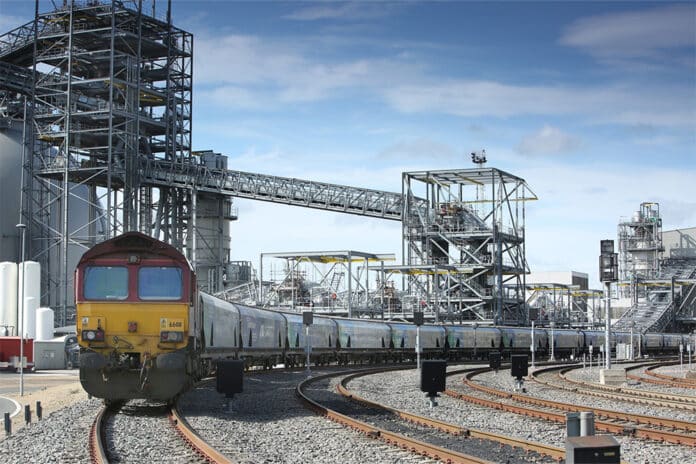In its response to the Great British Railways Transition Team’s (GBRTT) freight growth target call for evidence, Rail Partners – the trade body representing independent passenger and freight operating companies – has set out the necessary policy it says is needed to make the ambitious target achievable; and explains why trebling rail freight within the coming decades will support the transition to net-zero.
Transport is the largest carbon-emitting sector in the UK economy it said, and essential action is needed to lower transport emissions now so the UK can meet its commitment to reach net-zero carbon emissions by 2050.
Based on rail freight’s economic contribution today, a trebling of rail freight would increase the sector’s contribution to UK plc to around £7.5 billion per year. It will also help to rebalance the economy as 90 per cent of these economic benefits occur outside of London and the South-East.
Rail Partners Chief Executive, Andy Bagnall, said: “The demand for rail freight is already here today as customers increasingly look towards rail as a sustainable, cost effective, and reliable way to get their goods to market.
“Setting an ambitious growth target is key, supported by a wider policy framework to shift freight off the roads and onto the rails.
“Rail freight plays a critical role in the journey to net-zero. It removes seven million heavy goods vehicles from the roads each year, saving 1.4 million tonnes of carbon.’
The target, overseen by the proposed Great British Railways (GBR), will provide freight operators, customers and third parties with the confidence to make significant investments and infrastructure to ensure freight growth is realised. The stretching target to treble rail freight by 2050 should be underpinned by shorter term targets which are aligned with GBR’s five-year funding cycles.
Key points of the submission include setting targets that should be underpinned by five-year interim targets aligned with GBR’s funding cycle to ensure focus on delivering freight growth in the short-term, apply targets across the network to reflect the nationwide nature of rail freight although GBR regional divisions may set specific targets at regional and route level to ensure local focus on delivering for freight, apply the targets across all commodities so as to ensure that all opportunities for freight growth receive equal focus to give flexibility for industry and GBR to respond to the changing customer demands and economic trends, be supported by policies, infrastructure and incentives such as the expansion of the Mode Shift Revenue Support scheme and reintroduction of the Freight Facilities Grant in England that will enable freight growth.
Rail Partners has also identified a series of infrastructure and infill electrification schemes it belives could unlock significant increase in rail freight and support the transition towards a carbon net zero freight sector.
These infrastructure schemes are:
- HS2 (including Golborne link alternative) to release capacity on the conventional network,
- Transpennine Route Upgrade,
- Felixstowe to Nuneaton railway upgrade,
- Syston – Trent gauge enhancements,
- Eaglescliffe – Northallerton gauge enhancements,
- W10a-W12 gauge enhancements between Didcot and Cardiff on Great Western main line,
- W12 gauge clearance on classic network from Channel Tunnel to Wembley Yard, and
- Angerstein Wharf chord
Rail Partners also identified the following infill electrification priorities for rail freight:
- Thameshaven Branch Line linking to London Gateway,
- Link line between the GWML at Acton and the West Coast main line and the North London line,
- Felixstowe – Ipswich line,
- Connections to key container terminals,
- Link lines between the East Coast main line to terminals in Leeds and Wakefield,
- Corby to Syston and Erewash Valley,
- Teesport to Northallerton,
- Nuneaton to Birmingham Grand Junction (via Hams Hall and Landor Street Junction),
- Basingstoke to Southcote Junction and Oxford to Denbigh Hall Junction, and
- power supply upgrades on key main line routes such as ECML and WCML







































 0113 2082620
0113 2082620 info@railbusinessdaily.com
info@railbusinessdaily.com 15 Mariner Court, Wakefield WF4 3FL
15 Mariner Court, Wakefield WF4 3FL

